
(Photo by Reeflections)
There are a number of fishes that have dragon-inspired names, and today's post will take a look at one such species.
The wrasses (F. Labridae) are well-known for a couple of reasons. The first is that the juveniles of many species look very different from the adults, so much so that if you placed them side by side, you would probably classify them as 2 different species!

(Photo by richard ling)

(Photo by cbabbitt)

(Photo by SWBatzer)
For instance, these 3 photos all depict a single species of wrasse, the yellowtail coris (Coris gaimard), at different stages of growth.
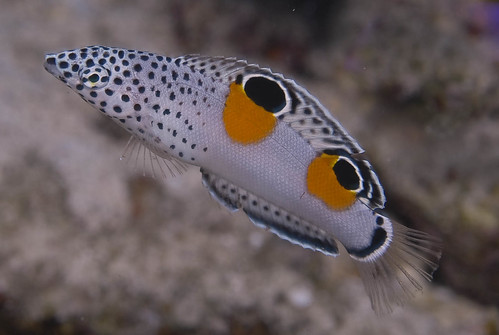
(Photo by DeepDownes)

(Photo by AbyssalPlain)

(Photo by Razvan Marescu)
Similarly, these photos show the changes that occur as a clown coris (Coris aygula) grows up.
In many species of wrasse, these changes in colour don't just reflect the fish's age, but also its sex. You see, many wrasses are protogynous hermaphrodites; this means that initially, all individuals begin life as females. At some point in time, as they mature, they make the switch and transform into males. The ovaries atrophy, and they develop male characteristics, complete with functional testes. In the photos of the yellowtail and clown coris shown above, the middle photo in both sequences represents an 'adult' female, with the last photo in each sequence showing the fully mature male. This is common in a number of marine fishes, including groupers, parrotfishes, and angelfishes.
One wrasse species in particular is the focus of today's quick post, thanks to its name.
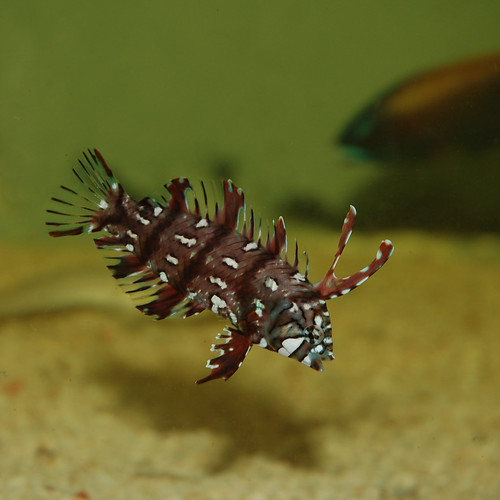
(Photo by Paul J. Thompson)
The juvenile form of this species is commonly known as the dragon wrasse (Novaculichthys taeniourus). It is found on reefs throughout the Indo-Pacific, from the Red Sea and the eastern coast of Africa to Hawaii and the Gulf of California. At this stage, when they're still small, dragon wrasse hide in plain sight by mimicking drifting bits of algae or leaves. They even swim in a manner that makes them look like seaweed being tossed about by the currents.
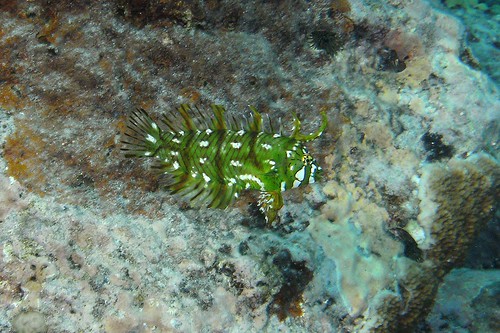
(Photo by BarryFackler)

(Photo by Arthur Koch)
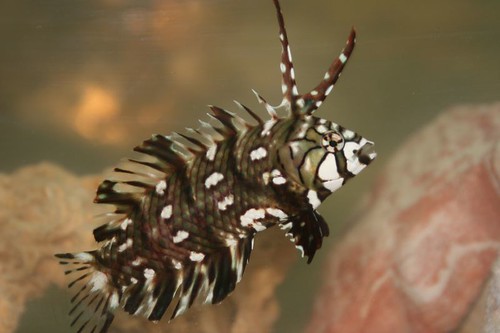
(Photo by JWCPhotography)
If the disguise fails, or when going to sleep in the evening, the dragon wrasse dives into the sand, hiding from predators by vanishing into the seabed in an instant. This is behaviour seen in many wrasse species.
As it grows up, the dragon wrasse undergoes a transformation, with the adult looking quite different from the juvenile. In fact, juveniles were once classified as a separate species from the adults.

(Photo by Eugenesz)
As an adult that may reach 30 centimetres in length, it is now known by a different common name, the rockmover wrasse, thanks to its habit of moving and overturning rocks and coral rubble to expose prey such as worms, crustaceans, and echinoderms. Adults often work together in pairs, taking turns to pick up and toss aside small rocks with their mouths. Unlike some other wrasse species, both sexes look similar.
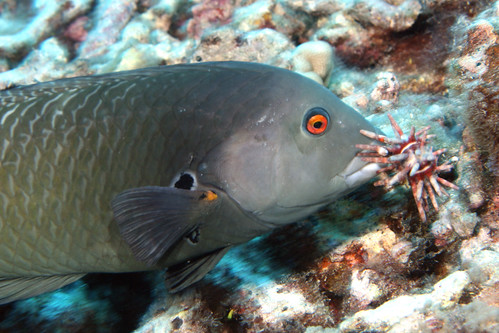
(Photo by PacificKlaus)

(Photo by Stephen Bateman1)
In the wild, foraging rockmover wrasse may be followed by other fish species, hoping to snatch prey that is flushed into the open by the wrasses as they flip over chunks of coral rubble.
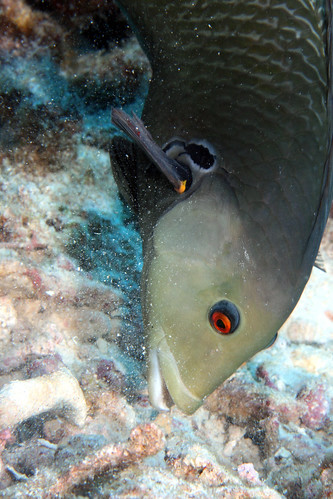
(Photo by PacificKlaus)
The dragon wrasse is popular in the marine aquarium trade, with most shipments consisting of wild-caught juveniles from Hawaii. When first introduced to the aquarium, dragon wrasse may be a little reluctant to feed, and may also be bullied by more belligerent tankmates. As a result, it may reject food and spend most of its time hiding amongst rocks or buried beneath the sand. This is a gluttonous species, and requires plenty of meaty food. If it is not feeding well, the juvenile dragon wrasse will quickly starve to death.
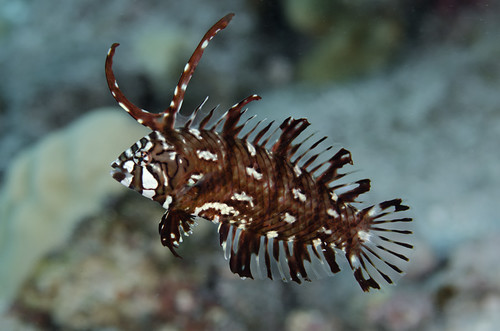
(Photo by Keri Wilk)
Thanks to its habit of diving into the sand and rearranging the tank decor, it is important to provide a thick bed of sand, as well as to ensure that any large rocks are sufficiently stable and securely placed, so that the wrasse does not cause any cause any cave-ins or rockslides while foraging or burrowing. Live prey in the form of small crabs or shrimps may be added to help provide occasional enrichment for the wrasse, which will then spend its time hunting down the crustaceans. As the wrasse grows larger, fishes small enough to fit inside its mouth are definitely not safe either, so tankmates must be chosen wisely. This species is certainly not suitable for the reef tank, as it will eagerly consider any mobile invertebrate within the aquarium as food. Even so-called cleaner shrimps, which tend to be immune to attacks from predatory fish, will be eaten. While it will not pick at sessile invertebrates, the dragon wrasse is capable of overturning and damaging expensive corals in its constant search for food.
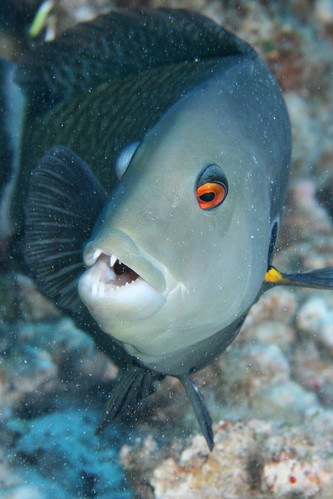
(Photo by PacificKlaus)
Upon reaching adulthood, the dragon wrasse undergoes a transformation, not just in appearance, but also in personality. It's ironic that while the dragon wrasse is vulnerable to bullying when it is young, the rockmover wrasse is highly territorial and aggressive. Remember, although the trade names are different, dragon wrasse and rockmover wrasse simply refer to the juvenile and adult stages of the same species. The rockmover wrasse is most suited for a fish-only setup, with tankmates capable of holding their own against a fish that has the potential to get quite mean-spirited within the confines of an aquarium. These include pufferfish, groupers, triggerfish, and large angelfish. It is incompatible with more mild-mannered fish species, which are liable to be harassed incessantly, and lose out during feeding time.

(Photo by agasfer)
Next up, we'll look at another fish with dragon in its name that is also quite popular in the marine aquarium trade.